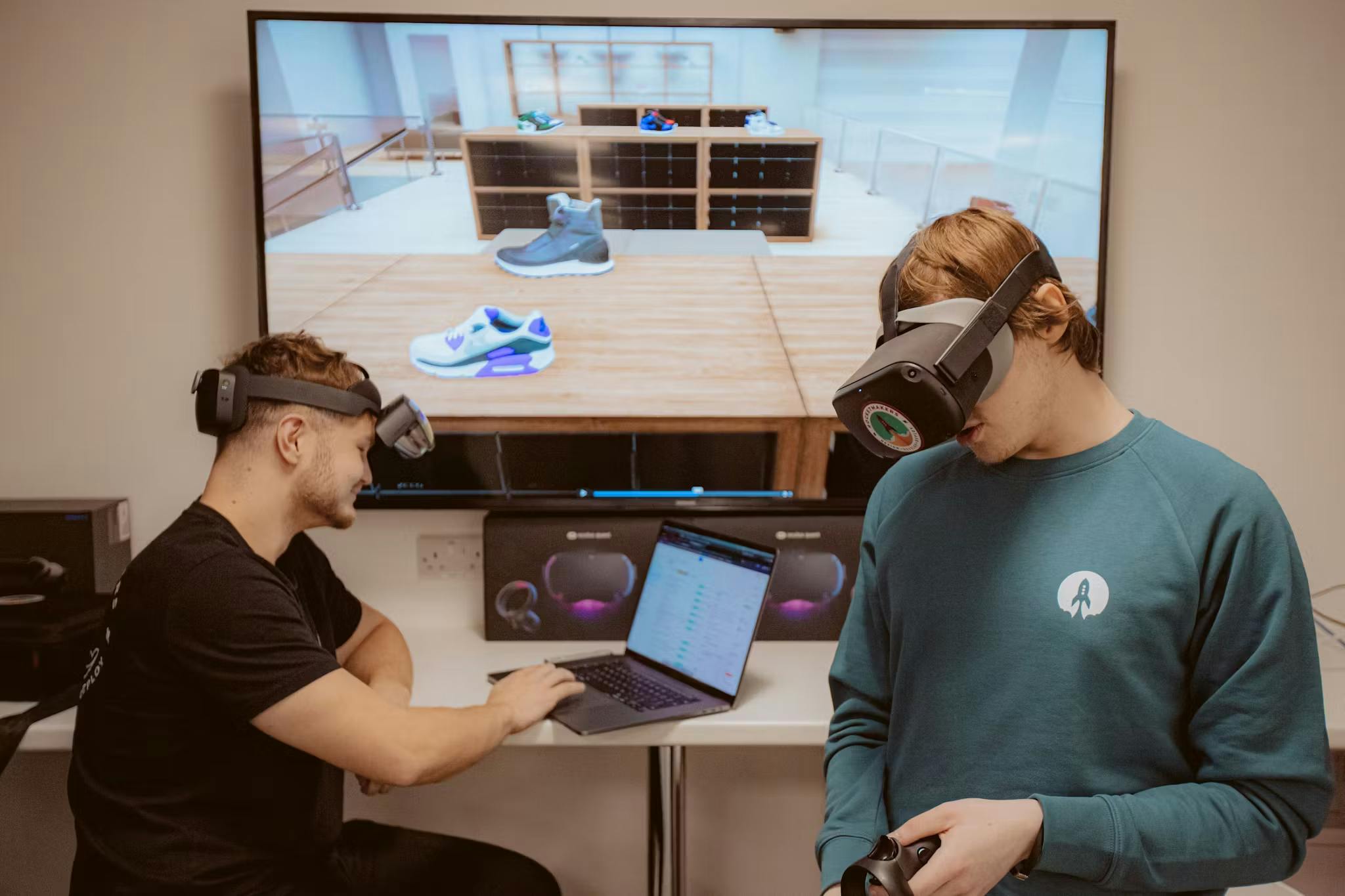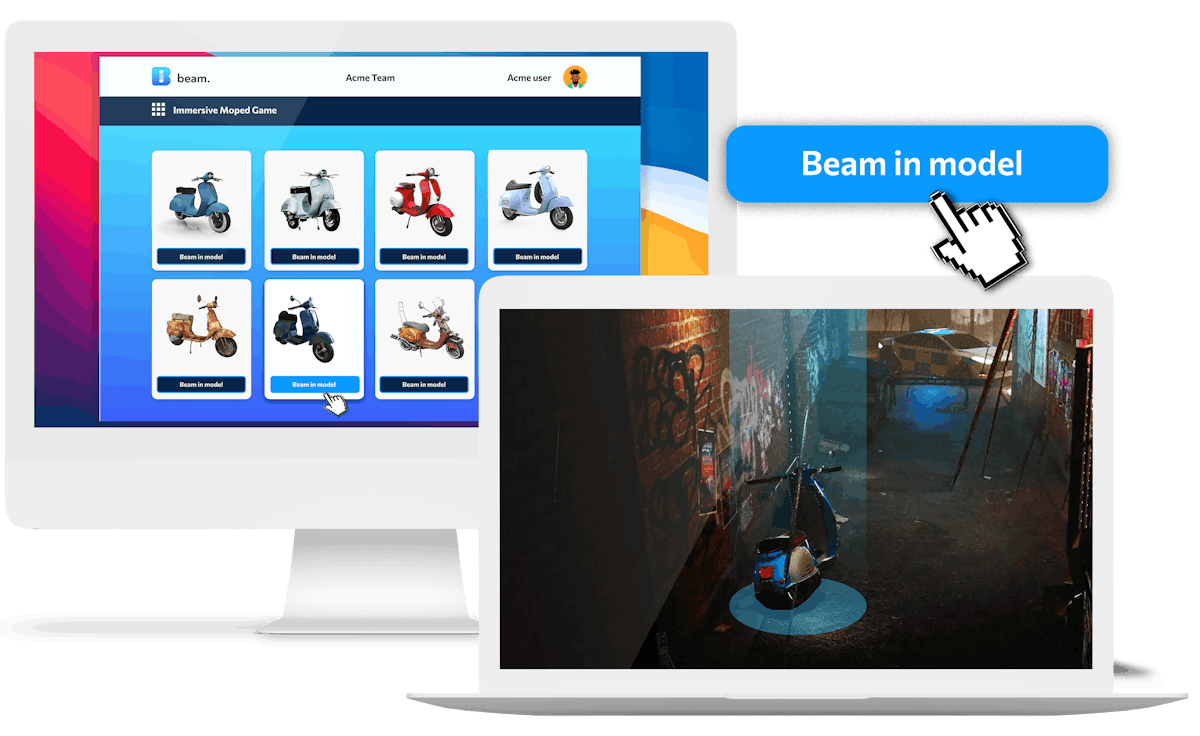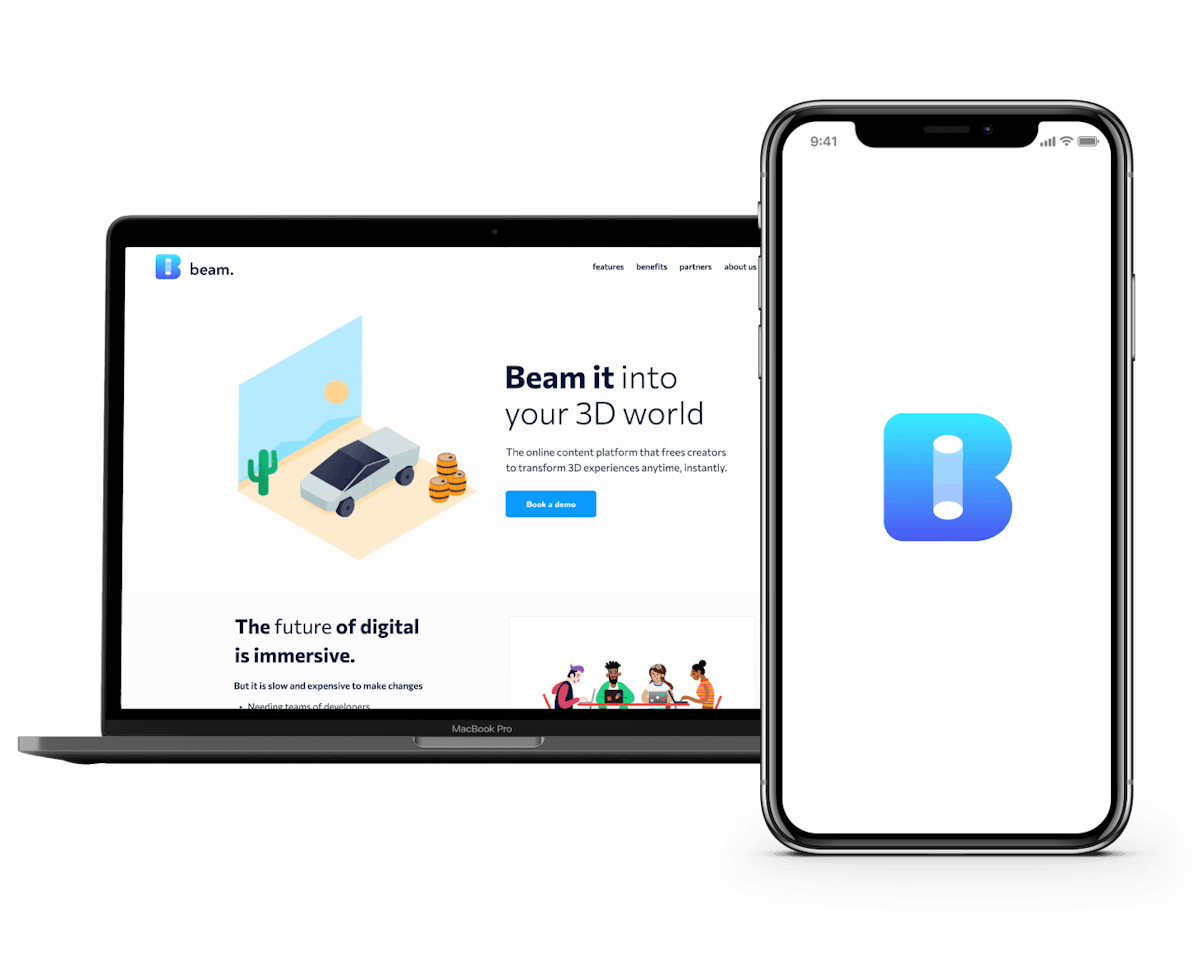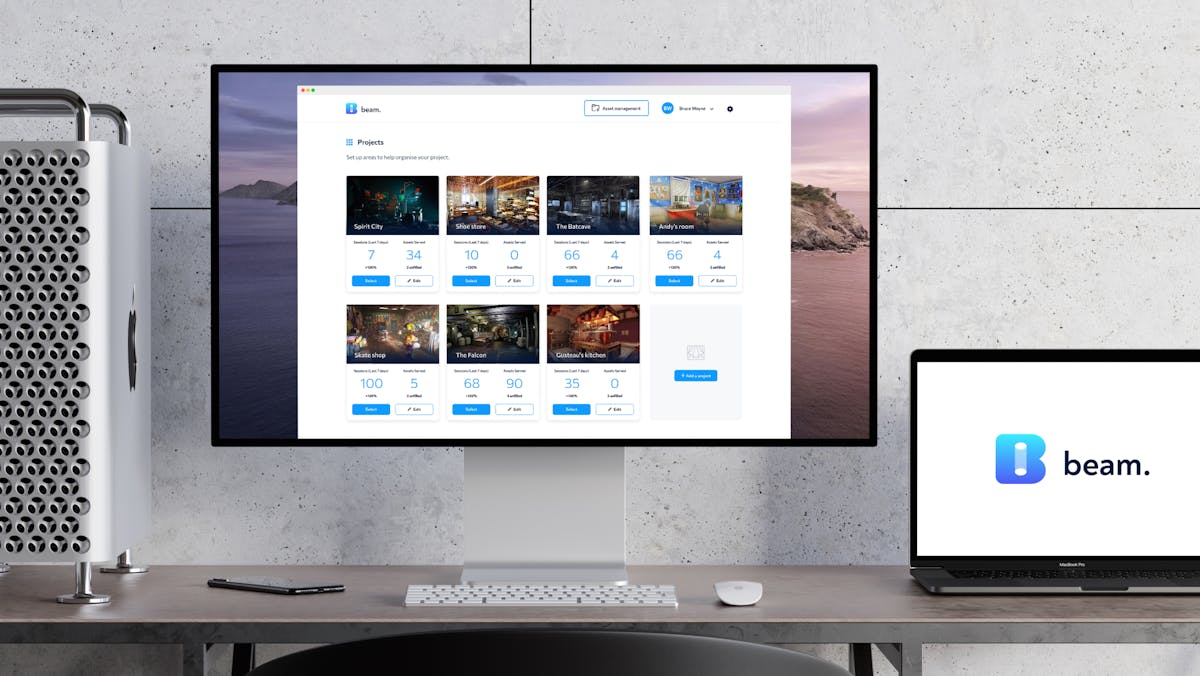
Beam

The Situation
Updating XR content is too difficult
Making minor adjustments to XR content once the design process is completed is extremely difficult. Any change requires a team of developers to get involved, and implementing update cycles can take days, weeks or months. As experts in Augmented and Virtual Reality, the Rocketmakers team was determined to make this process easier.
Making XR content easier would be similar to how content management for websites has evolved over time. During the early days of the World Wide Web, any change to a website required specialist knowledge. Today, no technical knowledge or expertise is required to keep online content fresh and up to date thanks to tools known as “content management systems.” We decided XR content needed a similar tool set, along with the analytic data that would make it possible for content owners to understand exactly what content users engaged with, and what content they didn’t.
Our Partners
Working with industry leaders to build the right product, and the product right
Rocketmakers teamed up with three other partners to design Beam’s MVP: creative digital firm Whiley & Co, VR games specialists Opposable Games, and AR and VR designers Virtual View Productions. This helped us ensure we were building a product that met the needs of a wide spectrum of users from the XR industry.
Along with these three partners we also applied for, and won, a £1 million development grant from Innovate UK. This grant was awarded to help us research and develop the technology behind Beam, with a view towards commercialisation in future.

The Task
Enabling XR content to be updated in real time
For XR content to reach its full potential, it needs the types of tools that website managers use on a regular basis. Beam allows content managers to quickly swap virtual objects in and out of environments from a content library and clearly displays the analytic data they need to understand how users engage with their content.
For Beam to be accessible to the XR industry, an important task would be to develop plugins for the two main game engines used to create 3D environments of all types, Unity and Unreal Engine.
We also needed to build systems to collect user data, and design dashboards to display it to the content managers. After consulting with our development partners, we created an analytics suite which included:
- Heat maps to show where users spend their time inside virtual environments
- Interaction stats with objects (including how many users pick up an object and how long do they interact)
- View stats showing how long do users look at an object, screen, or image in an immersive environment

Rocketmakers have been an excellent partner in bringing the concept of Beam to life and helping to take it from prototype to an eventual product. Through their mix of technical skillsets and approach to design, Rocketmakers allows me to focus on content to complete the product user cycle.

Our solution
Seamlessly managing the heaviest of heavy content
For immersive environments, ensuring content loads instantly is essential. Website users get annoyed when they encounter the “pinwheel of death” while a slow website loads, but a slow load time in VR or AR is an even more disruptive experience.
Because of their complexity, the amount of data required to render a 3D object is much larger than an image of most videos (a phenomenon that developers refer to as “heavy”). The challenge Rocketmakers engineers faced early on is designing a system flexible enough to deliver heavy 3D assets in real time no matter how many calls are made on the system.
Beam also required a complex algorithm to determine what asset to serve where and to whom. This required a heavy computational load, and getting it right and fast enough to deliver assets in real time was a challenge.
Our innovation
Deploying Orbit microsystems for the first time
The Rocketmakers team had another engineering advantage for building Beam: a second in-house development called Orbit. Orbit consists of code modules called “capsules” which produce commonly occurring software features, such as sign-up processes, payment systems, and data security.
Orbit capsules can be used in almost any project, and allow developers to skip ahead to the more exciting, innovative part of software design. This is believed to be the only fully-functioning microservices suite outside of Silicon Valley, and it was fully deployed for the first time during the development of Beam.
By using Orbit capsules to lay the foundations for Beam, Rocketmakers developers were able to skip straight to the most innovative and challenging parts of the development process.

Our innovation
Deploying Orbit microsystems for the first time
The Rocketmakers team had another engineering advantage for building Beam: a second in-house development called Orbit. Orbit consists of code modules called “capsules” which produce commonly occurring software features, such as sign-up processes, payment systems, and data security.
Orbit capsules can be used in almost any project, and allow developers to skip ahead to the more exciting, innovative part of software design. This is believed to be the only fully-functioning microservices suite outside of Silicon Valley, and it was fully deployed for the first time during the development of Beam.
By using Orbit capsules to lay the foundations for Beam, Rocketmakers developers were able to skip straight to the most innovative and challenging parts of the development process.
The result
Putting Beam into play
Beam’s first proof of concept trial was a partnership with a major sports broadcaster, who asked Rocketmakers to help them create a virtual viewing environment for watching sporting matches.
Using Beam, the client was able to update the viewing environment to sports-specific themes (for example, from netball-related content, to football-related content). Updated content included posters, virtual sports memorabilia, and animated 3D models of players. In a demonstration, Beam was also able to update the environment for specific matches, featuring logos and players of specific teams.
Beam has also been used to manage the content in a virtual “twin” of a real-life nightclub in nearby Bristol. Using Beam, developers constructed a nightclub with a capacity for 200 users, which featured lighting changes, visual effects, and instant switching from one DJ to another. Videos could also be uploaded which are played on a simulated projector shown on a wall behind each DJ.
The system’s ability to enhance AR projects is also being demonstrated by a company using Beam to create a series of concerts which take place on an AR stage users can project onto a nearby surface users can see via a phone camera.
The feedback from virtual developers has been extremely positive, and Rocketmakers are looking forward to a full commercial release of Beam later in 2022.

For Beam I've built a Unity plugin and a web interface which allows game developers to have their worlds populated with 3rd party content.

Award-winning technology
We were delighted that Beam won the Innovation category at the 2022 edition of the https://rocketmakers.com/blog/rocketmakers-win-bathlive-business-award/. This is the third time in 2022 that Beam’s innovation has been recognised, after winning the Best Use of VR/AR category at the GoTech Awards, and Best Use of AR or VR at the SPARKies.
